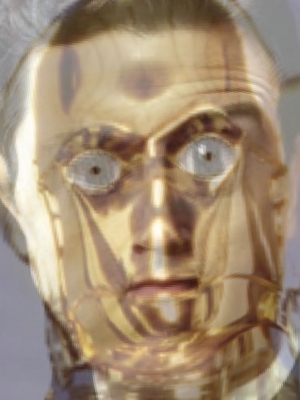Here’s something I’m working on which has not yet been published. The working title is Around the Rimless Sea: Mystic Fables for Religious Misfits; each features a mercenary cook and former holyman named Prosatio Silban. This excerpt is from one called Passing Notes, about our hero’s time-lost love who won’t go away …
“THAT’S SWEET,” SHE SAID. “BUT work now. Later…” And she kissed him again, waking odd corners of his body.
Senses engaged and soul singing, Prosatio Silban set to his task with a will. The stack of corn-wraps at his left grew steadily, was taken away, grew again more swiftly. He discovered that the process had its own rhythm — slap, smell, flip, smell, remove; slap, smell, flip, smell, remove — which seemed to coincide with the music wafting into the smoky kitchen. This is not hard at all, he thought, stealing a glance at Ashlaya’s perfect form and inadvertently meeting her amused eyes.
He opened his mouth to speak, when the cook to his left — a pasty-faced youth named Otlon, who had been filling and rolling the fried corn-wraps and arranging them on cloth-covered wicker plates — coughed loudly and made gargling sounds.
“Don’t mind me,” he said apologetically. “I can never get used to whatever plants or flowers or weeds they have around here. Don’t they bother you?”
Schooled in politeness, Prosatio Silban refrained from putting his hand over Otlon’s thin lips.
“Not as such,” he said, one eye on Ashlaya. She had finished her mixing and was now shaping raw wraps for the skillet.
“Why not? They surely bother me.”
“Ah… I don’t know. Sacreant’s Privilege, I would think.”
“What’s that?”
“Well…” He noticed Ashlaya listening out of the corner of her ear. “In exchange for our ministrations to the faithful, Sacreants receive from the Dancing Gods certain benefits. We … the Sacreants don’t get colds or headaches and the like, for one thing, and tend to heal faster.”
“Does that include hearts?” murmured Ashlaya.
Prosatio Silban looked at her, ready to spill a flirtatious reply.
“I wish I didn’t get colds,” Otlon said. “But every summer, it’s the same thing — three weeks of dripping hackery. And the sleeves! I wish I were a Sacreant.”
“No, you don’t,” Prosatio Silban said, feeling as though his heart was running motionless at full speed. He turned again to Ashlaya.
“Why don’t I?” asked Otlon.
“Why don’t you what?”
“Why don’t I wish I was a Sacreant?”
“It’s not exactly as wonderful as it might seem,” Prosatio Silban said.
“Why not? Get to live in the Great Shrine, eat well every day, get to be in charge of everything and tell people what to do. I’d like that better than slaving for old Ape-piss.”
“You only say that because you …” lack the experience to contrast it to your current station, he almost said. Am I going to talk this pompously for the rest of my life? No wonder people dislike us … dislike the Sacreants, I mean. “You don’t have anything to compare it to,” he finished.
“Compared to this, anything’s better,” grumbled Otlon.
“Be gentle,” whispered Ashlaya. “You’ll learn to like yourself. In time.”
How did you know what I was thinking? But Otlon didn’t give him the chance to ask.
“Why did you quit being a Sacreant anyway?” he asked.
Prosatio Silban’s limbs stiffened in sudden anger. How could he explain, in brief and to a complete stranger, his entire life? That he had been abandoned as a baby at the Great Shrine by one or another poor mother? That, in gratitude for growing up strong-minded and clean-limbed under Sacreantal discipline, he had vowed to repay to his benefactors a debt of someone else’s making? And that he had eventually discovered only disillusion where he had once confidently sought Truth? He groaned inwardly, and relaxed his rage.
“It’s a bit complicated,” he said. “Sometimes a thing isn’t as nice up close as it is from a distance.”
“Sometimes it’s nicer,” Ashlaya said softly. “But you can’t tell that. Before you know it.”
“I think everything’s wretched, from a distance or otherwise,” said Otlon. “You’ll see. Especially here.” He picked up a plateful of filled corn-wraps and ambled off.
Prosatio Silban sighed in relief. Finally. Now for some real conversation.
But when he turned to Ashlaya, she was looking at him apologetically.
“The pitcher’s empty. I must get some more water,” she said. “Wait for me?”
“For you, anything,” Prosatio Silban replied with a bow. “But every heartbeat is an eternity until you return.”
“Then. I shall always return.” She smiled enigmatically and padded away, carrying his heart with her.
“I can’t believe how many wraps these people eat,” Otlon said, returning. “I bet they don’t get colds either.” Prosatio Silban sighed.
 Some people say that the Torah can only be meaningful if the events depicted therein are true. In other words, if 600,000 people didn’t march through the Sinai Peninsula; if the plagues were just a mythologization of natural disasters; if Lot’s wife never turned into a pillar of salt — then nothing else about this Text of Texts can be worth the parchment it’s inscribed on.
Some people say that the Torah can only be meaningful if the events depicted therein are true. In other words, if 600,000 people didn’t march through the Sinai Peninsula; if the plagues were just a mythologization of natural disasters; if Lot’s wife never turned into a pillar of salt — then nothing else about this Text of Texts can be worth the parchment it’s inscribed on.
 The writers’ strike wears on, but our nerves don’t thanks to those daring and resourceful folks at
The writers’ strike wears on, but our nerves don’t thanks to those daring and resourceful folks at